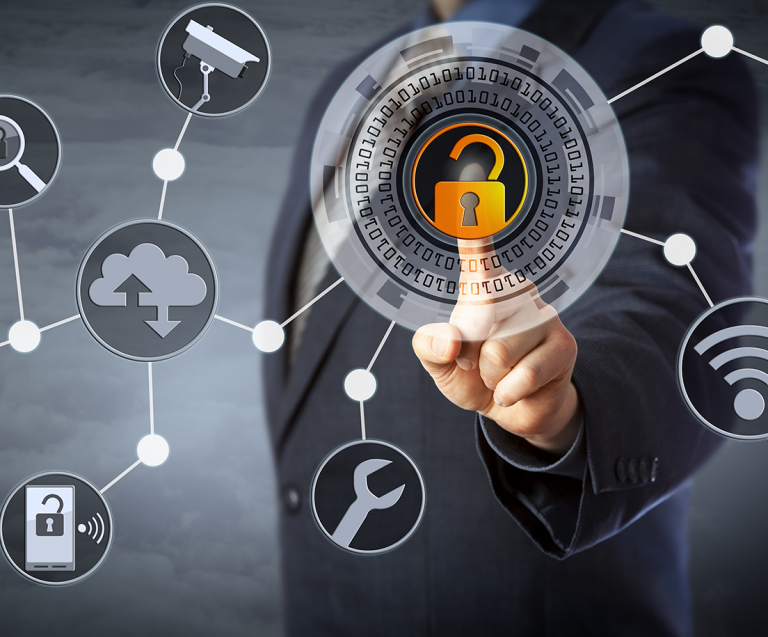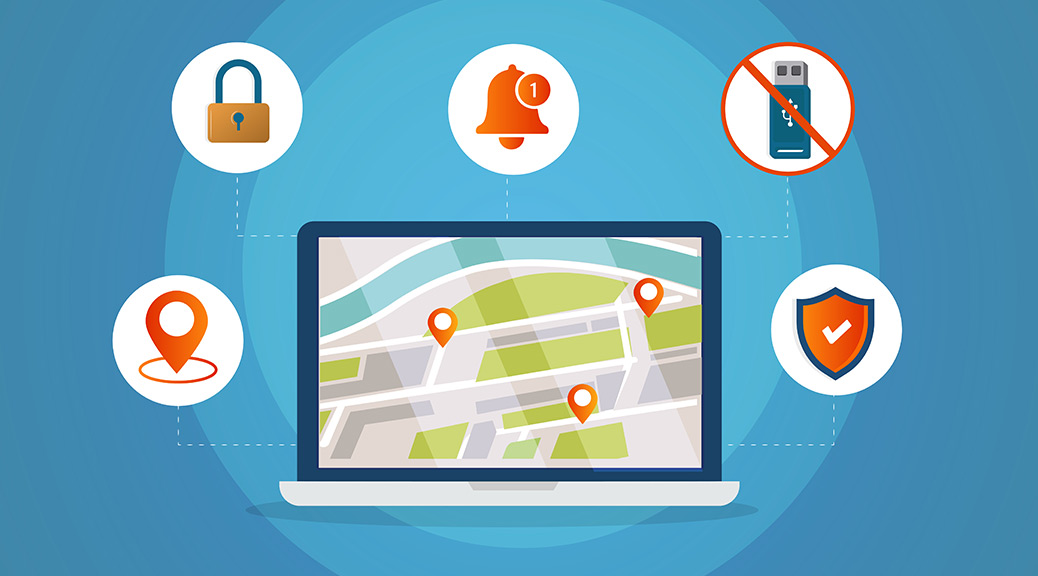Ever wondered how you can keep your devices safe in today’s digital jungle? Security device management is the key to locking down your digital life. It’s not just about passwords or antivirus software anymore. This is about a comprehensive strategy to protect everything from your phone to your smart fridge. Yep, your fridge can be hacked too!
In a world where hackers are getting smarter and cyber threats are evolving faster than ever, managing your security devices has become crucial. Whether you're a tech-savvy individual or someone who just wants to browse the web safely, understanding security device management can save you from major headaches. Trust me, you don’t want to deal with the chaos of a data breach.
This guide is packed with actionable insights, expert tips, and real-world examples to help you master security device management. We’ll dive deep into everything you need to know, from setting up firewalls to implementing multi-factor authentication. So, buckle up and get ready to fortify your digital fortress!
Read also:What Is Haley Baylee Known For Unveiling The Rising Stars Achievements
Here's a quick breakdown of what we'll cover:
- What is Security Device Management?
- Why It Matters in the Modern World
- Top Security Tools You Need to Know
- How to Set Up a Secure Device Management System
- Best Practices for Staying Safe
Understanding Security Device Management
What Exactly Is It?
Security device management refers to the processes, tools, and strategies used to secure all your connected devices. Think of it as a digital bouncer for your gadgets. It ensures that only authorized users can access your devices and that your data remains safe from prying eyes. And let’s face it, in this era of smart homes and IoT devices, you’ve got a lot of gadgets to protect.
Now, here’s the kicker: security device management isn’t just about protecting your laptop or smartphone. It’s about securing everything that connects to the internet, including your smartwatch, fitness tracker, and even your smart thermostat. With so many entry points, it’s crucial to have a solid plan in place.
Why Should You Care?
Because hackers are out there, and they’re not just after your email password. They’re after your identity, your money, and sometimes even your peace of mind. A single breach can lead to a cascade of problems, from financial losses to identity theft. And let’s not forget the embarrassment of having your private photos or messages leaked online.
But here’s the good news: with the right security device management practices, you can significantly reduce the risk of falling victim to cyberattacks. It’s like putting a lock on your front door—it won’t stop all intruders, but it sure makes it harder for them to get in.
Why Security Device Management Matters in the Modern World
The Rise of Cyber Threats
Cyber threats are evolving at an alarming rate. Gone are the days when a simple antivirus program was enough to keep you safe. Today, hackers use sophisticated techniques like phishing, ransomware, and social engineering to breach your defenses. And with more devices connected to the internet than ever before, the attack surface has grown exponentially.
Read also:Jameliz Benitez Smith Biography Unveiling The Life And Legacy Of A Rising Star
According to a recent report by Cybersecurity Ventures, cybercrime is expected to cost the world $10.5 trillion annually by 2025. That’s a staggering number, and it highlights just how serious the problem has become. But here’s the thing: most cyberattacks are preventable with the right security measures in place.
The Impact on Businesses and Individuals
Both businesses and individuals are at risk when it comes to cyber threats. For businesses, a data breach can lead to financial losses, reputational damage, and legal consequences. Just look at what happened to companies like Equifax and Target—they lost billions of dollars and the trust of their customers because of poor security practices.
For individuals, the stakes are just as high. Imagine waking up one day to find that your bank account has been drained or your social media accounts have been hijacked. It’s not a pleasant thought, is it? That’s why security device management is so important—it gives you the tools you need to protect yourself in a digital world.
Top Security Tools You Need to Know
Firewalls: Your First Line of Defense
A firewall is like a digital security guard that monitors incoming and outgoing traffic on your network. It blocks unauthorized access and helps prevent malicious software from infiltrating your devices. There are two main types of firewalls: hardware firewalls and software firewalls. Hardware firewalls are typically used by businesses, while software firewalls are ideal for individual users.
Some popular firewall options include:
- Windows Defender Firewall
- Comodo Firewall
- pfSense
Antivirus Software: The Backbone of Your Security
Antivirus software is essential for detecting and removing malicious software from your devices. It scans your files and programs for known threats and provides real-time protection against new threats. While no antivirus program is foolproof, having one installed is a must for anyone who wants to stay safe online.
Some of the best antivirus programs available today include:
- Norton Antivirus
- McAfee Total Protection
- Kaspersky Internet Security
How to Set Up a Secure Device Management System
Step 1: Inventory Your Devices
The first step in setting up a secure device management system is to take inventory of all your connected devices. This includes everything from your smartphone and laptop to your smart home devices. Knowing what you have is crucial because it allows you to prioritize your security efforts.
Here’s a quick checklist to help you get started:
- Smartphones
- Laptops
- Tablets
- Smart TVs
- Smart Home Devices
Step 2: Implement Multi-Factor Authentication
Multi-factor authentication (MFA) adds an extra layer of security to your devices by requiring more than just a password to gain access. It typically involves something you know (like a password), something you have (like a security token), and something you are (like a fingerprint). MFA makes it much harder for hackers to break into your accounts, even if they manage to steal your password.
Some popular MFA tools include:
- Google Authenticator
- Authy
- Duo Security
Best Practices for Staying Safe
Regularly Update Your Software
Keeping your software up to date is one of the simplest yet most effective ways to improve your security. Software updates often include patches for known vulnerabilities, so ignoring them can leave your devices exposed to attacks. Make it a habit to check for updates regularly and install them as soon as they become available.
Here’s a quick tip: enable automatic updates whenever possible. This way, you won’t have to worry about missing an important update.
Use Strong, Unique Passwords
Using strong, unique passwords for each of your accounts is another crucial step in securing your devices. Avoid using obvious passwords like “123456” or “password” and opt for complex combinations of letters, numbers, and symbols instead. And don’t forget to change your passwords regularly to keep them fresh.
Consider using a password manager to help you keep track of all your passwords. Some popular options include:
- 1Password
- Bitwarden
- LastPass
The Role of Encryption in Security Device Management
What Is Encryption?
Encryption is the process of converting data into a code that can only be read by someone with the right key. It’s like putting your data in a digital safe that only you can open. Encryption is essential for protecting sensitive information, such as financial data, personal documents, and private messages.
There are two main types of encryption: symmetric encryption and asymmetric encryption. Symmetric encryption uses the same key for both encryption and decryption, while asymmetric encryption uses a pair of keys—one for encryption and one for decryption.
Why Is Encryption Important?
Encryption is important because it adds an extra layer of security to your data. Even if a hacker manages to steal your data, they won’t be able to read it without the encryption key. This makes it much harder for them to use your data for malicious purposes.
Some popular encryption tools include:
- BitLocker
- Veracrypt
- OpenPGP
Common Mistakes to Avoid in Security Device Management
Ignoring Security Warnings
One of the biggest mistakes people make in security device management is ignoring security warnings. Whether it’s a warning about an outdated software version or a suspicious email, these warnings are there for a reason. Ignoring them can leave your devices vulnerable to attacks.
So, here’s the deal: pay attention to those warnings. They might seem annoying, but they could save you from a major headache down the line.
Using Weak Passwords
Another common mistake is using weak passwords. As I mentioned earlier, weak passwords are easy for hackers to guess or crack. And if you use the same password for multiple accounts, a single breach can compromise all of them.
So, do yourself a favor and start using strong, unique passwords for each of your accounts. Trust me, your future self will thank you.
Conclusion: Take Action Today
In conclusion, security device management is more important than ever in today’s digital world. By understanding the basics of security device management and implementing best practices, you can significantly reduce the risk of falling victim to cyberattacks. Remember, prevention is always better than cure.
So, what are you waiting for? Take action today and start securing your devices. Whether it’s setting up a firewall, enabling multi-factor authentication, or using strong passwords, every step you take brings you closer to a safer digital life. And don’t forget to share this guide with your friends and family—they’ll thank you for it.
Got any questions or comments? Feel free to leave them below. And if you found this guide helpful, be sure to check out our other articles on cybersecurity and digital safety. Stay safe out there!


